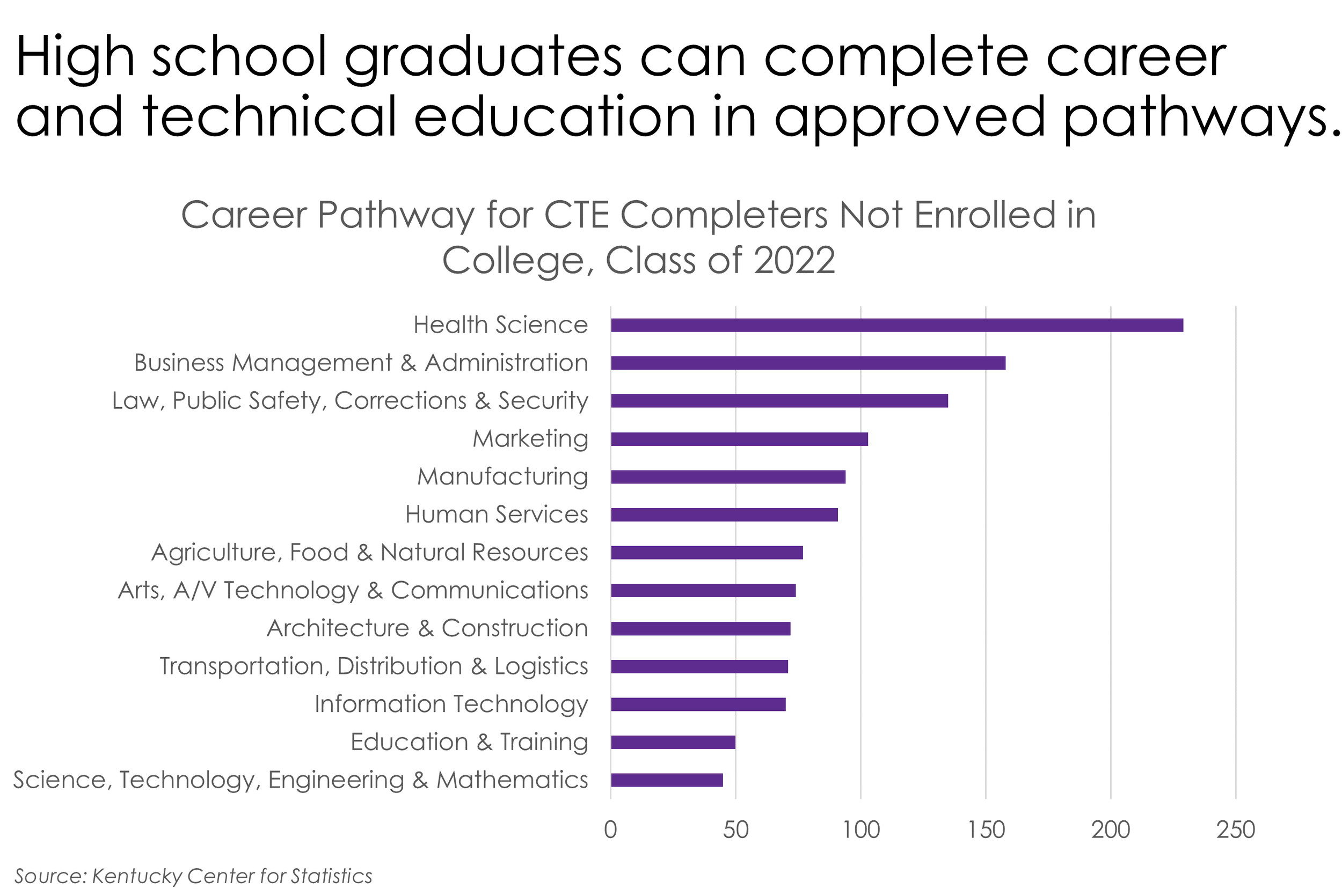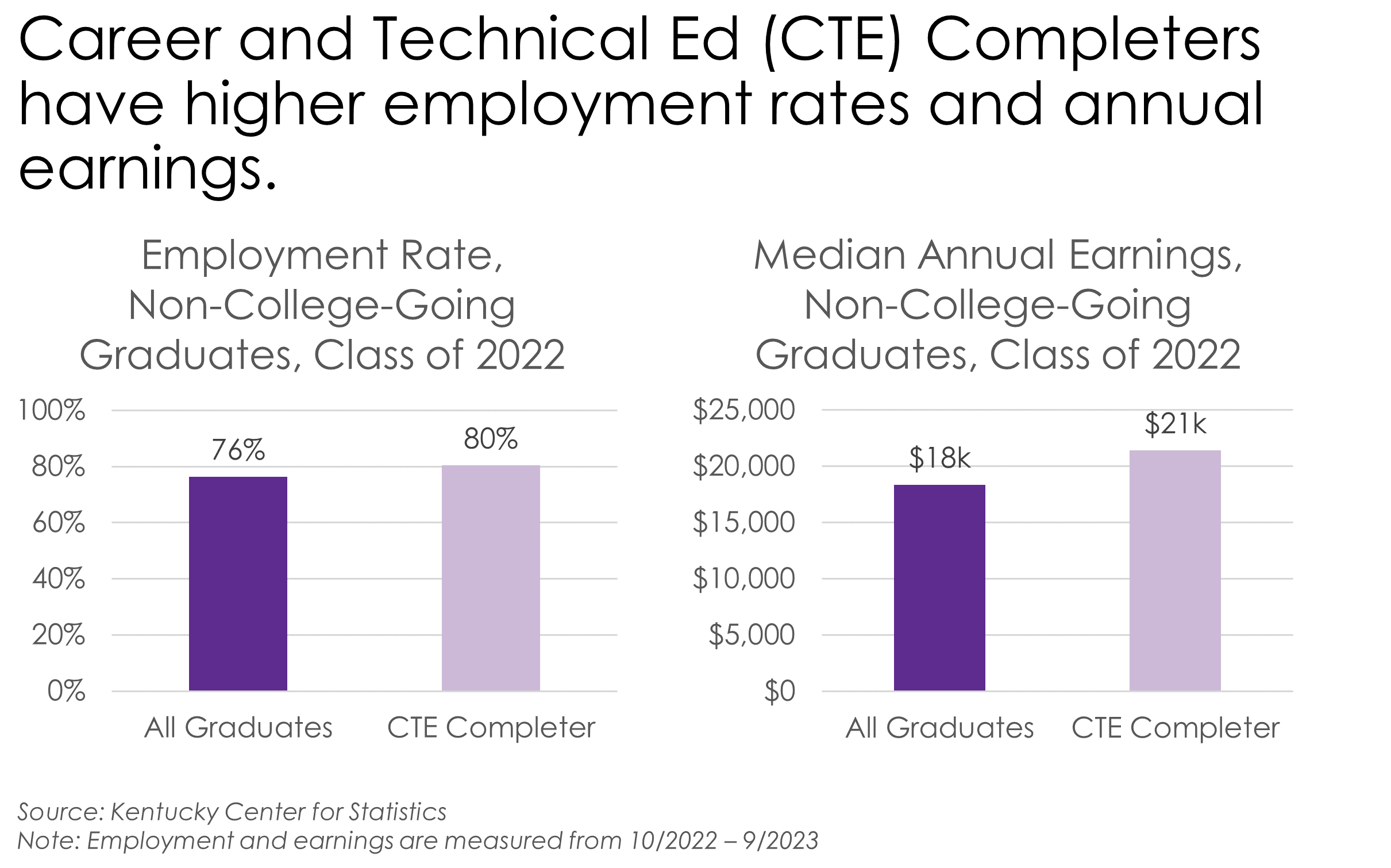A glimpse at recent high school graduates in the workforce
High school seniors are less likely to enroll in college than they were a decade ago. The college-going rates in the KentuckianaWorks region have fallen across nearly all school districts in the last decade. The college-going rate at Jefferson County Public Schools (JCPS), the largest school district in the region and state, was below 50% for the class of 2022. While postsecondary education tends to provide the most straightforward path to a good job, the other half of students not pursuing additional education could benefit from additional career services.
The focus of this article is on the graduating class of 2022 who did not enroll in postsecondary within a year of graduation.
Among the graduating class of 2022 in the KentuckianaWorks region, there were more than 4,000 seniors who were not enrolled in a postsecondary institution in Kentucky the year following high school graduation. 76% of these students were employed during the year after graduation. While high school graduates do appear to find employment, it is either inconsistent and/or low-wage work. Annual median earnings for these young people was just over $18,300. For comparison, in a full-time, year-round minimum wage job earnings are just over $15,000. The living wage for an independent, economically self-sufficient adult with no dependents is nearly $44,000.
Career and technical education completion increases employment/earnings
Career and technical education opportunities are available to high school students across the region. Within JCPS, the Academies of Louisville have adopted career-themed learning communities within high schools, partnering with the business community to provide experiential learning opportunities. Area Technology Centers (ATCs) serve school districts in the regional counties, providing students with access to hands-on learning opportunities in specific career fields.
30% of the region’s non-college-going class of 2022 (nearly 1,200 students) were Career and Technical Education (CTE) completers, meaning they completed four courses within an approved career pathway. CTE completers had both higher employment rates and median earnings as compared to all graduates.
Among the non-college-going CTE completers from the class of 2022, those in Education & Training pathways had the highest employment rates, and median annual earnings higher than earnings across all CTE completers. Students in Marketing pathways also had both higher employment and earnings than the typical CTE completer.
On the other hand, students in Human Services pathways had both lower employment rates and median earnings than CTE completers overall. Health Science and Business Management & Administration pathways have the highest volume of CTE completers, and while employment rates are high, median annual earnings are lower than CTE completers overall.
After the Tassel
KentuckianaWorks and the state’s other local workforce boards received an infusion of funds from the General Assembly last year in HB1. This funding provides a unique opportunity to provide career services to students while still enrolled in high school, particularly focused on those without postsecondary plans, to help them land a good job upon graduation. After the Tassel aims to attract high school seniors who do not have immediate plans to attend college, and connect them to full-time employment that pays at least $15 an hour with benefits and relates to the participant’s career interests and plan. Learn more here.






